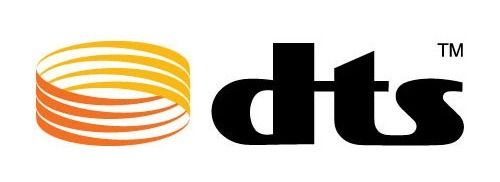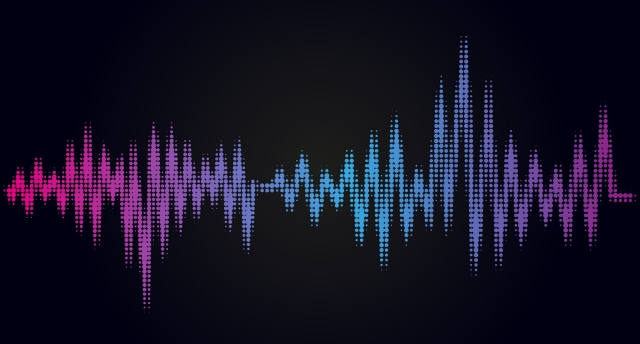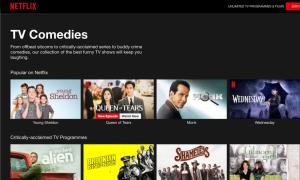When it comes to setting up your home entertainment center, chances are you’ve come across the question that hounds many who first delve into these waters — which surround sound technology is better, Dolby Digital, or DTS? It’s an important question to answer, not only because it will dictate pretty much all the AV equipment you keep in your house, but also because having an amazing sound experience obviously makes for a better entertainment overall. While platforms like Netflix and Prime Video offer Dolby Digital and DTS for a cinema-like experience at home, the question still remains; which is better, and what’s the difference? Well, if you’re hounded by the same concerns, this article is for you. Let’s take a look at Dolby Digital vs DTS, and compare the two surround sound formats.
Dolby Digital vs DTS: A Detailed Comparison (202`1)
While both Dolby Digital and DTS are surround sound formats, there are certain differences in the way they encode audio. In this article we have explained Dolby Digital and DTS so you have a good idea about both the technologies, and we have discussed the differences between DTS and Dolby Digital formats.
What is Dolby Digital?
Dolby Digital is the audio compression tech that was developed by Dolby Labs way back in 1986. Being the first one to provide a surround sound codec, Dolby Digital is most commonly considered the industry standard. Dolby Digital aims to offer a rich and surround sound experience, just the way it was recorded with minimal loss in quality. The company started by providing digital sound for films all over the US theaters. Speaking of which, the first film to be encoded by Dolby Digital’s audio compression algorithm was Batman (1992). It eventually moved to CDs and DVDs.

As of today, Dolby Digital isn’t just limited to cinema halls; it is also available for online streaming services, Blu-ray players, streaming boxes, and more.
Ever since its inception, it saw a number of enhanced codecs for a better sound experience. Dolby Digital Plus, Dolby Digital TrueHD, and the popular Dolby Atmos are a few names. While Dolby Digital Plus offers a “lossy” output (it results in some audio deterioration), Dolby TrueHD ensures lossless output for a result close to the original audio. Dolby Atmos is the object-based surround sound tech that tries to create an even better output.
What is DTS?
Coming up as a direct competitor to Dolby Digital is DTS. Founded in 1993, the tech (originally Digital Theater Systems) also aims to provide people with a rich sound experience. The DTS tech was first seen in the 1993 Jurassic Park. Much like Dolby Digital, DTS can be found in home theater systems, Blu-ray players, gaming consoles, set-top boxes, and more.
DTS also went on to expand and hence, there are a number of enhanced audio codecs available. The list includes DTS-HD High Resolution, DTS-HD High Resolution (DTS’ lossless version), and DTS:X, which rivals the Dolby Atmos tech.

Dolby Digital vs DTS: What are the differences?
Both Dolby Digital and DTS use audio compressing tech to reduce unnecessary audio data while providing high-fidelity audio output. Dolby Digital encodes audio in the AC-3 format and it uses Modified Discrete Cosine Transform (MDCT) algorithm to compress audio and reduce the audio footprint. On the other hand, DTS uses the Adaptive Differential Pulse-Code Modulation (ADPCM) algorithm to bring down the audio file size.
Both make use of the 5.1 surround sound setup, where five are speakers and one is a subwoofer. That said, both Dolby Digital and DTS support 7.1 speaker set ups and 6.1 speaker set up as well. The position of these speakers is critical in creating the surround sound effect. In the case of the 5.1 setup, one speaker is placed in the center in front of the viewer, the other two speakers are placed at a 60-degree angle on both left and right sides, and the remaining two speakers are positioned at a 120-degree angle on left and right sides. The position of the subwoofer doesn’t need to be specific. As for the 7.1 speaker scenario, two more speakers are added to the back of the room. The 6.1 setup involves the addition of only a single back speaker.
But some people regard DTS better than Dolby Atmos because it offers a higher bit-rate (640 kilobits as compared to 1.5 megabits in DTS). To put things into perspective, a high bitrate is one of the factors that is considered while determining the audio quality. As a rule of thumb, if the audio has a higher bitrate, it will have a better sound quality and audio transparency. Compression level is another point that is considered. Here’s a look at the popular audio standards offered by both technologies:
| Dolby Digital Audio Standards | DTS Audio Standards |
| Dolby Digital: Maximum bitrate of 640Kbps (Blu-ray Discs) and 448Kbps (DVD) in a 5.1 surround sound system. The most common one is found on online streaming services like Netflix, Amazon Prime Video, and more. One thing to note is that Netflix can move up to 768kbps with Dolby Atmos mix. | DTS Digital Surround: Maximum bitrate of 1.5Mbps in a 5.1 surround sound system. It’s the most common one and is found on CDs and DVDs (up to 778Kbps). |
| Dolby Digital Plus: Maximum bit-rate of 1.7Mbps in a 7.1 surround sound system. Mostly found on DVDs. | DTS-HD High Resolution: Maximum bit rate of up to 6Mbps in a 7.1 surround sound system. |
| Dolby TrueHD: Maximum bit rate of 18Mbps in a 7.1 surround sound system. This is the cutting-edge, lossless audio standard and is available on Blu-ray players where you have ample free space. | DTS-HD Master Audio: Maximum bit-rate of 24.5Mbps in a 7.1 surround sound system. This is the top-notch, lossless audio offering by DTS. |
From the looks of it, DTS seems to be winning the DTS Digital Surround vs Dolby Digital battle. So do we finally have a winner? Not really. There’s more to it.
If you are talking about audio quality then bit-rate is just one metric that helps you determine the quality of the audio. Things like signal-to-noise ratio and dynamic range are also factored in. Plus. the on-paper superiority of DTS is challenged by Dolby as it claims that its audio compression technology is more efficient than that of DTS. Thus, it can offer better audio quality even if the bit rate is low.

Perhaps, this is the reason why online streaming services are opting for Dolby’s services since saving on data bandwidth is cost-effective for online companies.
Dolby Atmos vs DTS:X
In this Dolby Digital vs DTS comparison, two codecs stand out from respective companies — Dolby Atmos and DTS:X. Both surround sound technologies aim to offer incredible sound clarity, isolated vocals and instrumentals, and 3D sound effects. Talking about Dolby Atmos first, it’s mainly used to create object-based surround sound with speakers mounted atop the ceiling. As I mentioned above, Dolby Atmos includes overhead speakers and if you want to truly enjoy multi-dimensional audio at your home, you need all the Atmos-compatible gear and sound system. That’s why Dolby Atmos is currently so popular in the cinema halls where multiple audio channels are available for an immersive sound experience.
As for home entertainment, there are many Dolby Atmos soundbars and speakers that try to simulate a similar object-based audio experience. Instead of ceiling-mounted speakers, affordable Atmos sound systems pack upward-firing speakers that bounce audio off the ceiling to create that illusion. Another great quality about Dolby Atmos is that it can deliver close to original sound quality at a lower bitrate. A popular example is Netflix that is churning out shows and movies with Dolby Atmos support at the highest bitrate of 768kbps. It’s nowhere close to 24-bit/48 kHz, but Netflix thinks the audio quality is indistinguishable from the lossless master track and offers a lossless-like sound experience.

Moving to DTS:X, it’s also a surround sound tech that creates an object-based sound environment. However, DTS does not require users to have overhead speakers or height channels. The heavy-duty job of creating multi-directional sound is done by its object processor. You need to buy the special audio system that comes with DTS:X support. Nowadays, affordable soundbars and speakers are also coming with DTS:X support but they are actually using DTS’ new Virtual:X tech that aims to simulate multi-dimensional sound without requiring overhead speakers or a multi-channel system. As for online streaming services, Netflix or Prime Video don’t support DTS:X but it may change in the future. All in all, I would say, Dolby Atmos is winning this war against DTS:X as it’s widely available to general users through cinema halls and online streaming services.
Frequently Asked Questions (FAQs)
What audio format does Netflix use?
Netflix supports the 5.1 surround sound setup we discussed earlier. It comes with support for Dolby Digital Plus and even Dolby Atmos. Amazon Prime Video is another name that supports the Dolby tech.
What do you need to view high audio quality content on popular OTT platforms?
You need to ensure that the device you are viewing the content on supports either Dolby Digital or DTS. You can also connect the device to an audio system that supports the formats.
How to know if the movie/show you are watching supports the format?
The movies/shows available on the OTT platform will come with a DD+ or a Dolby Atmos icon for you to differentiate.
What are the popular Dolby Digital-supported devices?
Dolby Digital mainly works on Blu-ray discs, DVDs, PCs, and more. Besides this, there are a number of Smart TVs from Samsung, Amazon Fire TV Stick 4K, the latest iPhone 13 series and more iPhones, and various Android phones too.
What are the popular DTS-supported devices?
DTS is available on the latest Xbox Series S and Series X, various TVs, soundbars, and more.
How to convert DTS into Dolby Digital?
For this, you can use a few software such as Wondershare, MKV tools, and more. The new Xbox series and even some Samsung and Oppo players come with an option to do so.
What is DTS Neo 2.5?
This is another DTS audio format for high-quality 3D sound output. It is primarily available for Samsung devices, owing to a Samsung-DTS partnership.
Which is Better? DTS or Dolby Digital
Unfortunately, there hasn’t been any objective study of the two audio standards that can help us determine the best one out of the two. What’s more, since both Dolby and DTS are proprietary codecs and not open-source, no one can simply go through the source code and see what makes them tick.
For the most part, if you have the right audio gear, high-bitrate audio files, and software support, both DTS and Dolby Digital are capable technologies for you to enjoy a high-standard audio experience. So, which audio format do you prefer using? Is Dolby Digital the king of surround sound for you, or do you like using DTS instead? Let us know in the comments down below.



















I just got an LG OLED and a basic Yamaha 5.1 Home Theater In A Box (with a powered subwoofer or they’re trash) which supports both TrueHD and DTSHDMA. Both sound ridiculously awesome regardless of bit rate spec dick sizing games. When PS2 came out i got my first 5.1 setup because of the optical out. It was so novel at the time to have 6 discrete channels being laser beamed through a single cable. I’ve never looked back since and watching film in stereo is half an experience. But the bit rate game in those days clearly and tangibly made DTS the winner back then.
Honestly, the article pretty much sums it up, I ran Dolby Digital and now run DTS, both are amazing. I have a pair of Klipsch RP-500SAs and a bunch of other stuff. I like DTS better for now, Ozark has an amazing “sound bubble”
Very useful information! Thank you guys!
The details for both audio format explained in details. Thank you for your explanation.
I have always preferred DTS, I can hear the difference in action sequences in movie sound tracks. It has also been written about several times that a majority of studio sound mixers find STS superior because it carries more information.
The problem comes in streaming and the desire to save bandwidth, Netflix spends over $1.2 billion a year just on servers to ensure no buffering for customers and every MB per second they can save is more money in their pocket. That’s why there currently isn’t a streaming service that offers DTS audio option. Netflix and Disney+ is starting to add Imax Enhanced movies in their catalog and that is owned by DTS and carries a DTS signal, except the streamers actually pay to convert that soundtrack to Dolby Atmos because it is still cheaper for them because they save so much bandwidth.
So, while DTS has shown to be better quality and is preferred by audio mixers and record producers (more DTS concert blu-ray’s are being produced) it is all coming down to the might dollar for streamers.
This has now trickled down to some products, mainly soundbars, as soundbars users are primarily streets ams don’t buy physical discs where they can listen to DTS so they are no longer licensing the DTS technology for those products to save money.
It has been rumoured that DTS is working on a new format designed specifically for streaming that would use similar bitrates as Dolby. This could be though to do why also having a noticable audio difference. DTS is mainly know for having better mid bass and LFE quality so if they can manage to pull that off with a similar bitrate to Dolby, then they still have a chance.
I sure hope they can pull it off as I am a huge DTS fan that prefers their sound signature, on some of my older DVD’s or buerays, I prefer the upmix of the DTX soundtrack to the Atmos mix on a 4k or blu-ray. I enjoy the deeper and warmer sound.
I am more into stereo. Rule of thumb ,more bit rate better the experience. Most of my gear support both Dolby and dts.impossoble for me to make the distinction.i beg your pardon for my inability to comment on surround sound.
I believe more work needs to go in for development of codec which should make any audio setup produce it’s best, get more people interested in sound.
Very good explanation for both of the format, to understand them clearly!
Thanks a lot!!
Bez dwóch zdań DTS najlepszy 👍👍